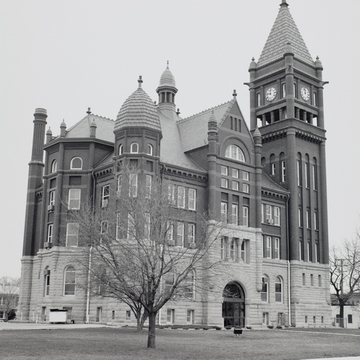The Milwaukee architect of the Montgomery Courthouse, Henry C. Koch (a Fellow of the American Institute of Architects), designed courthouses in Kansas, Iowa, and Wisconsin. His 1890–1891 building replaced a modest 1857 two-story wooden building that had been moved in 1866 to Red Oak from Frankfort, the first county seat. Koch provided the county
You are here
Montgomery County Courthouse
1890–1891, H. C. Koch and Company. Northwest corner of 2nd and Coolbaugh streets
If SAH Archipedia has been useful to you, please consider supporting it.
SAH Archipedia tells the story of the United States through its buildings, landscapes, and cities. This freely available resource empowers the public with authoritative knowledge that deepens their understanding and appreciation of the built environment. But the Society of Architectural Historians, which created SAH Archipedia with University of Virginia Press, needs your support to maintain the high-caliber research, writing, photography, cartography, editing, design, and programming that make SAH Archipedia a trusted online resource available to all who value the history of place, heritage tourism, and learning.














